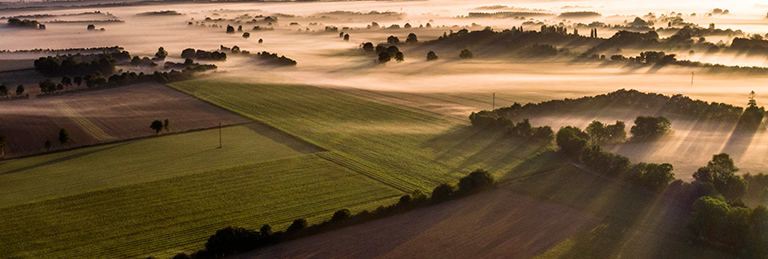Maize Seed in 2015: Challenging Growing Season, yet Good Production for 2016 Plantings
Contact person: Pierre Guillaumin, Head of Mission, Economics and International – FNPSMS (French National Federation of Maize and Sorghum Seed Production)
Europe's high-quality maize seed harvest finished in November. This summer's growing conditions were marked by hot temperatures during pollination – a key stage in field seed multiplication. However, seed producers, farmers, and companies were able to limit damages, allowing overall production targets to be reached in most of the EU-28. France, the first European maize producer and world export leader that supplies high-quality seed to numerous countries, has attained 98 percent of its production objectives. In Hungary and Romania – second and third maize producers among the EU states –, harvest results indicate 85-90 percent, and 110-115 %, respectively. Consequently, overall EU yields should stand at 190-195 seed bags (*of 50 000-kernel each) per hectare, for a 2015 area of 133 000 hectares. This should ensure a diversified and high-quality supply of maize seed throughout the EU come the 2016 plantings.
Ukraine – European Maize Production Leader and Important Customer to the French Maize Industry
Contact person: Anna Kołakowska, International Promotion – FNPSMS (National French Federation of Maize and Sorghum Seed Production)
With a 2015/16 production of 23 million tons and exports expected around 15 million tons, Ukraine is the current leading maize producer in Europe. This is due to the country's maize area increase (up to 4,1 million hectares in 2015, from to 2,8 million in 2010), as well as to its growing use of Western genetics, as the trend of its seed imports from the EU-28 indicates (45 000 tons in 2014, compared to 20 000 tons in 2010). France has benefitted from that development and accounts for about 20 percent of Ukraine's maize seed imports.
France's seed marketing combines various technical activities (training sessions, workshops, publications) and communication initiatives (agricultural shows, video clips, web pages) that the FNPSMS has been carrying out for more than seven years. These activities are aimed at promoting maize and the use of high-quality seeds. It is within that context that two important meetings were held in Kiev in late October 2015. Thus a bilateral meeting on the French-Ukrainian cooperation in the grain sector took place, gathering several French organizations and services (the French Embassy in Kiev, the UFS, the FNPSMS, the GNIS, and the SICASOV) and the Ukrainian Ministry of Agriculture. Also, a conference was organised as part of the InterAgro show, where French industry representatives presented the French maize seeds and the solutions that the “Élite” genetics brings to the double challenge of food security and global warming.
“Diagnosing Accidents in Maize” – Now Available in Russian
Contact person: Anna Kolakowska, International Promotion – FNPSMS (National French Federation of Maize and Sorghum Seed Production)
Written by experts of the ARVALIS Institute, this brochure gives a detailed description of over 70 accidents typically seen in maize crops as a result of deficiencies, diseases, pests, and climate stress. Each accident is presented as a separate “fact sheet” describing the characteristic symptoms, harmfulness, hazards, preventive measures, and recommended treatments. A series of recent photos accompany the text to better illustrate the diagnosis to the reader.
COP 21: Maize and Its Contribution to Reducing GGEs
Contact person: Jean-Paul Renoux, Technical Advisor, AGPM (General Association of Maize Producers)
As stated by the GIEC experts in their fifth report (2014), apart from certain questions on the calculation models, the anthropogenic climate change raises no more doubts. Based on four more or less pessimistic scenarios, weather models compiled by the GIEC indicate that global temperatures will rise by 0,3 – 4,8 °C during 2081-2100, compared to the average of 1986-2005. In order to keep global warming below 2°C, world GGEs should be reduced by half, and down to a quarter in the developed countries. This was the major topic of the UN Climate Change Conference – the so-called “COP 21” – that took place in Paris in December 2015.
In 2012, global GGEs were estimated at 49 000 million tons of CO2 equivalent, representing an average emission of 6 tons of CO2 equivalent per capita. Agriculture per se, which accounts for 11 percent of total emissions, is mostly a source of N2O (resulting from the nitrogen-based fertilizers used on crops) and CH4 (methane – resulting from the enteric fermentation in ruminants). As to the CO2 emissions, most agricultural crops have a good “track record”, as the energy used when burning fuel or making fertilizers is largely offset by the carbon “pumping” done by the plants and its partial sequestration into the soil along with crop residues.
The maize plant is a carbon-pumping machine that is particularly efficient. Thus, in France's growing conditions, at a yield of 9,5 tons/hectare, the plants' net carbon capture ability is 22 tons (CO2 equivalent)/hectare/year (Arvalis, 2015). Also, since carbon fixation and oxygen production go hand in hand during photosynthesis, one hectare of maize produces 10 tons of oxygen a year.
Yet the most spectacular contribution maize has in terms of GGE reduction is its ability to “sequestrate” carbon in the soil: for each ton of grains that leaves the field, one ton of biomass returns into it, in the form of both above-ground and root crop residues. Lastly, maize is estimated to enable long-term stocking of as much as 2,2 tons of CO2 equivalent in the soil/hectare/year.
Moreover, by replacing fossil fuels with more environmentally-friendly renewable energy options, such as biofuels (produced from grains, today – and from stalks, tomorrow) or methane, maize contributes to the sustainability of our planet's ecosystem whilst providing food security to the world population. As the GIEC experts indicated for the first time, it is precisely the yields and a sound intensification of agriculture (along with creating irrigation water reservoirs) – often put forth as problems – that are the true solutions.






